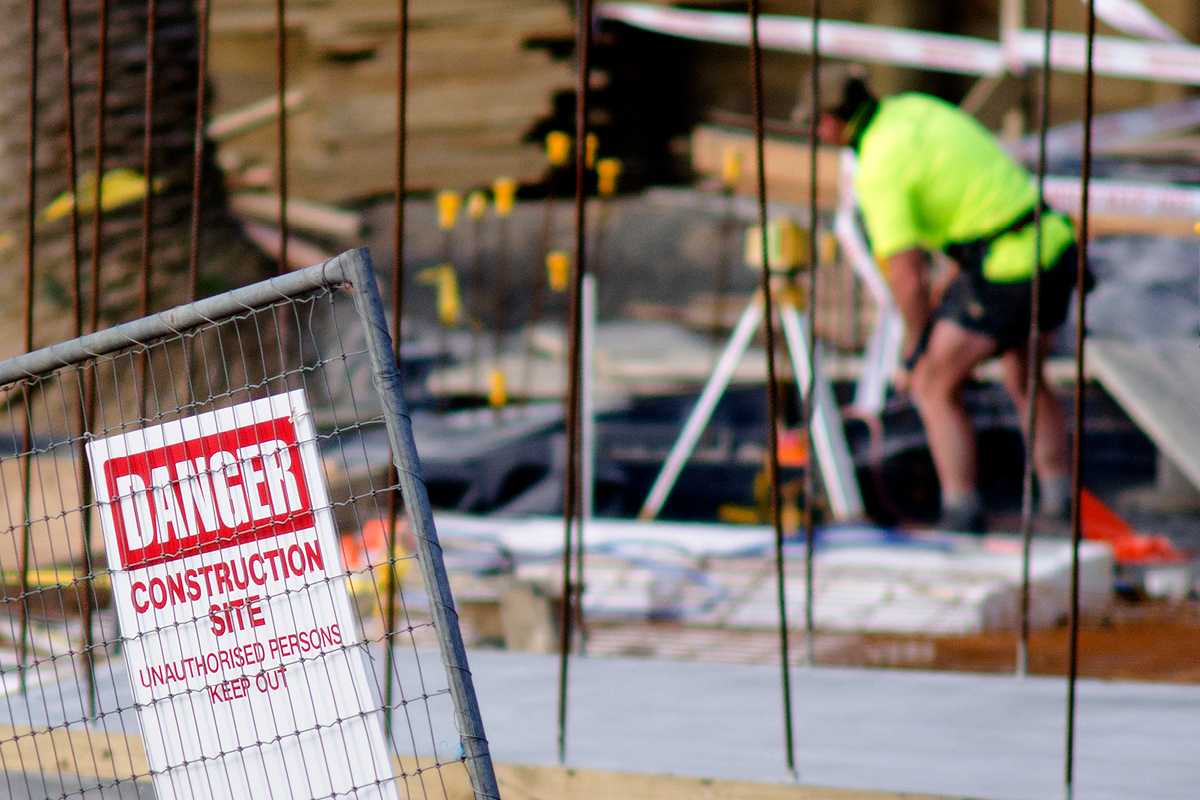
Bishop outlines ambitious housing programme
Housing Minister Chris Bishop has announced the government’s five-point plan to address the housing crisis, reports Sally Lindsay.
26 March 2024
He has revealed a run through of where the government is at on each of the five points as well the work programme for the year and the rest of this parliamentary term.
The five interlocking actions are:
- Going For Housing Growth policy to smash urban limits holding our cities back, fix infrastructure funding and financing, and introduce incentives to encourage cities and regions to go for growth.
- Improvements to the rental market to make it easier to be a landlord, and easier to be a tenant.
- Building and construction changes to improve competition and lower building costs.
- Better social housing to look after those who need support.
- Fundamental reform of the Resource Management Act 1991.
Going For Growth
Bishop says the government’s ambitious Going For Housing Growth policy agenda aims to deal with the underlying cause of the country’s housing problems.
“I call it the housing trifecta – land supply, infrastructure funding and financing, and incentives for councils to go for growth.
“On land supply, New Zealand is a small country but is not short of land. But restrictive urban planning laws have held our cities back from growing, both out at the edge of our cities and up inside them.”
Bishop says while some say cities should become denser, he rejects that. “Density is important and has a major role to play in addressing housing challenges, but we need to allow our cities to grow out at the fringe as well, as long as the infrastructure can be delivered economically, because artificially high land prices at the city fringe suffuse themselves into price of houses everywhere else.”
He also rejects urban sprawl, saying there are many benefits of density – economically, environmentally and socially. “I believe we can create thriving, beautiful, and highly connected cities in New Zealand that drive economic growth and allow for affordable housing.”
The right path forward, Bishop says, is to allow greenfield growth and more density. The country needs abundant development opportunities and housing choice.
The government will also be making some changes to the National Policy Statement on Urban Development, particularly to allow for mixed-use zoning, especially around transport nodes – shops and restaurants on the lower floors of apartment buildings, for example.
Councils will be able to opt out of the Medium Density Residential Standards if they wish. The government’s position is that the MDRS tools were too blunt and one-size-fits all, Bishop says. Councils that wish to continue to use them will have to ratify their continued use.
One complexity to this is that many councils are at different stages of altering their plans to give effect to the NPS-UD and MDRS.
“From now on I will be the decision-maker on relevant district plan changes relating to housing where councils and independent hearings panels do not agree, or where there are requests for extensions to timeframes. This is in my capacity as RMA Reform Minister.”
In Wellington’s case, where there is dissension, Bishop says he will follow a careful process where he considers the council’s recommendations and take advice from officials and expects next month.
“I will then make the final decision promptly on whether the council’s recommendations should be followed or those of the independent hearing panel.”
In Auckland’s case, Bishop has agreed to a one-year extension for the council to work through Plan Change 78.
“Auckland is in a unique situation for two reasons: one is the impact the anniversary weekend floods and Cyclone Gabrielle had on the city in areas that were tagged for intensification. The other is the government has scrapped Labour’s failed Auckland Light Rail project, meaning Auckland no longer has to take theoretical future light rail stations into account for up-zoning decisions, and is having to do some rethinking.”
The other two elements of the Going For Housing Growth policy are improvements to infrastructure funding and financing, and creating financial incentives for councils to allow for even more growth – such as potentially sharing a percentage of the GST of new housing with councils as ACT campaigned on. Bishop says he will have more to say about both those elements in the coming months.
Rental market changes
The second part of the housing agenda is fixing the private rental market, Bishop says.
“The previous government declared war on landlords and tenants paid the price, with rents increasing $170 per week from 2017 to 2023.”
He says Labour’s interest deductibility changes were unprincipled, poor public policy and counterproductive.
The ability to deduct interest expenses on rental properties will be phased back in from April 1. From that date, all affected taxpayers will be able to claim 80 per cent of their interest expenses and 100 per cent from April 1, 2025 onwards. Advice from officials is that this will put downward pressure on rents, Bishop says.
“A series of sensible changes to tenancy laws are also being planned to encourage landlords back into the market.”
The Residential Tenancies Act will be changed to restore no-cause 90-day tenancy terminations – not because the government “wants people to kick tenants out, nobody wants that”.
“We’re doing it because we’ve had strong feedback from landlords that they’re far more likely to take a risk on a tenant who, for example, may not have perfect references or may not have a steady nine-to-five job, if they know they have that backstop there if the tenancy becomes problematic.”
It will also be easier for tenants to have their much-loved furry, four-legged family member live with them. The government, he says, will do this by changing the RTA to allow landlords to charge an additional pet bond.
Build-to-rent
Another part of the rental market Bishop is keen to encourage is build-to-rent (BTR).
The Cabinet has agreed to make it easier for overseas investors to invest in BTR developments.
“We know New Zealand’s complex overseas investment laws have been holding the BTR sector back. There are only 22 registered developments in New Zealand, but there is great potential for growth.”
He says the Cabinet has agreed the Overseas Investment Act will be amended to create a new streamlined consent pathway that will allow investors to purchase land with the intention of building a new BTR development or purchase an existing one.
Cabinet has also agreed that a ministerial directive letter will be issued under the act to provide immediate certainty that NZ is open to foreign investment in BTR developments.
“However, the coalition government remains committed to the ban on overseas investment into existing residential housing and land in New Zealand (unless the investor is eligible for a consent).”
These changes, he says, are all about adding to the supply of housing and making it easier for Kiwis to get into a warm and dry home.
Building and construction
The third element of the plan is changes in building and construction to reduce red tape, cut costs, and create more competition.
Bishop says Building and Construction Minister Chris Penk is focused on delivering the government’s plan to streamline the building consent system. In the short term this includes placing more scrutiny on building consent delays by publishing processing times for each council every quarter.
“We also intend to remove the need for a building consent and a resource consent for structures under 60 square metres, like granny flats.”
Secondly, he says the government is focused on driving down the cost of building products by increasing competition and reducing barriers to high quality building products entering the country.
It’s about 50 per cent more expensive to build a stand-alone house in NZ than Australia. “This needs to change.”
Small projects under $65,000 will no longer have to pay the building levy, which will provide some relief to Kiwis doing bathroom and kitchen renovations.
“In addition to these changes we are looking for ways to reduce unnecessary red tape and to better manage seismic risk in relation to earthquake-prone buildings,” Bishop says.
RMA reform
No housing discussion is complete without talking about the RMA.
“The Resource Management Act 1991 is the legal framework that underlies so many of the issues I’ve already touched on today. We can’t fix the massive housing shortage and infrastructure deficit in New Zealand without reforming the RMA.”
One of the first things the new government did late last year was to drop the previous government’s failed reforms, which would have made it harder to do things in NZ.
“We are in phase two of our reform agenda, which includes the introduction of our new ‘one-stop-shop' fast-track consenting regime for infrastructure and regional and nationally significant projects, as well as a series of surgical and targeted amendments to the RMA and national direction to consent new infrastructure including renewable energy, allow farmers to farm, build more houses, and enable aquaculture and other primary industries.”
Bishop says phase three will focus replacing the RMA with a new regime based on the enjoyment of property rights.
“That’s a very once-over-lightly precis of an absolutely massive work programme, but I’ll be going into it in more detail in the days to come.”


